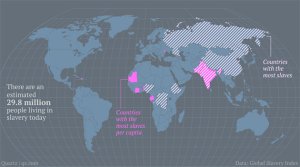
1606 – Guy Fawkes was executed after being convicted for his role in the “Gunpowder Plot” against the English Parliament and King James I.
1747 – The first clinic specializing in the treatment of venereal diseases was opened at London Dock Hospital.
1858 – The Great Eastern, the five-funnelled steamship designed by Brunel, was launched at Millwall.
1865 – In America, General Robert E. Lee was named general-in-chief of the Confederate armies.
1865 – The 13th Amendment to the U.S. Constitution was passed by the U.S. House of Representatives. It was ratified by the necessary number of states on December 6, 1865. The amendment abolished slavery in the United States.

1876 – All Natives were ordered to move into reservations.

1893 – The trademark “Coca-Cola” was first registered in the United States Patent Office.
1936 – The radio show “The Green Hornet” debuted.
1940 – The first Social Security check was issued by the U.S. Government.
1944 – During World War II, U.S. forces invaded Kwajalein Atoll and other areas of the Japanese-held Marshall Islands.
1945 – Private Eddie Slovik became the only U.S. soldier since the U.S. Civil War to be executed for desertion.
1950 – U.S. President Truman announced that he had ordered development of the hydrogen bomb.
1958 – Explorer I was put into orbit around the earth. It was the first U.S. earth satellite.
1971 – Astronauts Alan B. Shepard Jr., Edgar D. Mitchell and Stuart A. Roosa blasted off aboard Apollo 14 on a mission to the moon.
1971 – Telephone service between East and West Berlin was re-established after 19 years.
1982 – Sandy Duncan gave her final performance as “Peter Pan” in Los Angeles, CA. She completed 956 performances without missing a show.
1983 – The wearing of seat belts in cars became compulsory in Britain.
1985 – The final Jeep rolled off the assembly line at the AMC plant in Toledo, OH.
1996 – In Columbo, Sri Lanka, a truck was rammed into the gates of the Central Bank. The truck filled with explosives killed at least 86 and injured 1,400.
2000 – John Rocker (Atlanta Braves) was suspended from major league baseball for disparaging foreigners, homosexuals and minorities in an interview published by Sports Illustrated.
2000 – An Alaska Airlines jet crashed into the ocean off Southern California. All 88 people on board were killed.
2001 – A Scottish court in the Netherlands convicted one Libyan and acquitted a second in the bombing of Pan Am Flight 103 over Lockerbie, Scotland, that occurred in 1988.
on-this-day.com



















You must be logged in to post a comment.